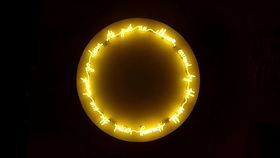本文目录导读:
- Understanding the Fish
- Choosing the Right Equipment
- Casting Techniques
- Bait Presentation
- Reading the Water
- Setting the Hook
- Playing the Fish
- Keeping Your Equipment in Top Shape
Content:
As the sun sets over the tranquil lake, casting a golden hue over the water's surface, the daily ritual of fishing becomes a serene escape from the hustle and bustle of life. For many, fishing is not just a hobby but a way of life. It's an art that requires patience, skill, and a deep understanding of the fish and their habits. If you're a frequent fisherman looking to enhance your catch, here are some expert tips and tricks to help you master the art of catching fish every day.
Understanding the Fish
Before delving into the techniques, it's crucial to understand the fish you're targeting. Different species have different feeding patterns, habitats, and preferences. Research the species you're interested in, and familiarize yourself with their behavior. This knowledge will give you an edge when it comes to choosing the right bait and technique.
Choosing the Right Equipment
The right equipment can make a world of difference. Here's a breakdown of the essential gear:
Rod and Reel: Choose a rod and reel that match the type of fish you're targeting. Lightweight rods for panfish, medium-action rods for bass, and heavy-duty rods for larger species like salmon or tuna.
Line: Use the appropriate line thickness for the fish you're trying to catch. Monofilament is versatile and floats, making it ideal for most freshwater fishing. Fluorocarbon is more expensive but invisible underwater, which is great for targeting spooky fish.
Bait or Lures: Live bait, artificial lures, or a combination of both can be effective. Match your bait to the fish's natural diet. For example, if you're fishing for bass, use crayfish or minnows as live bait, or use spinnerbaits or crankbaits as artificial lures.
Casting Techniques
A good cast is the foundation of successful fishing. Here are some casting tips:
Practice Your Cast: Spend time practicing your casting technique. A smooth, accurate cast is key to reaching your target without spooking the fish.
Wind the Reel Properly: Before casting, make sure your reel is wound properly. This ensures that your line is tight and won't tangle.
Adjust for Wind: If the wind is strong, cast into the wind to give your bait more time to reach the target. If the wind is calm, you can cast with the wind to help your bait drift naturally.
Bait Presentation
Once you've cast your line, the way you present your bait or lure is crucial:
Natural Movements: Fish are often sight feeders, so mimic the natural movements of your bait. If you're using a lure, vary your retrieve speed and depth to mimic the behavior of the prey fish.
Patience is Key: Let your bait settle at the bottom or drift slowly through the water column. Impatient movements can spook fish.
Use the Right Bait: Live bait should be lively and natural-looking. Artificial lures should be selected based on the species you're targeting and the conditions of the water.
Reading the Water
Understanding the water you're fishing in is essential:
Identify Structure: Look for submerged rocks, logs, and weed beds. These structures often hold fish.
Observe the Water: Pay attention to the surface. Fish may be visible breaking the water's surface. This could indicate feeding activity.
Weather Conditions: Fish often feed more actively during overcast or windy conditions. However, sunny days can also be productive, especially if the water is clear.
Setting the Hook
Timing is everything when it comes to setting the hook:
Feeling the Bite: If you're using live bait, you'll often feel a slight tug or pull on the line. If you're using artificial lures, be alert for sudden changes in the action of your lure.

Quick Reaction: When you feel a bite, set the hook quickly but gently. A sudden, violent pull can often dislodge the hook from the fish's mouth.
Playing the Fish
Once you've hooked a fish, it's time to play it:
Maintain Tension: Keep a steady pressure on the fish. This prevents it from running away and helps to tire it out.
Avoid Overpowering: Don't pull too hard or you might break the line. Allow the fish to exhaust itself while maintaining tension.
Land the Fish Carefully: Once the fish is close to the boat, land it gently. Be mindful of the fish's health and use a net if possible.
Keeping Your Equipment in Top Shape
To be a successful fisherman, it's important to maintain your equipment:
Regular Maintenance: Check your gear regularly for any signs of wear and tear. Replace worn-out line, hooks, and lures as needed.
Cleaning and Storing: After each fishing trip, clean your equipment thoroughly and store it in a dry, cool place. This will prevent rust and corrosion.
By following these tips and techniques, you'll be well on your way to becoming a master angler, able to catch fish every day with ease. Remember, fishing is as much about the journey as it is about the catch. So, sit back, enjoy the scenery, and let the art of fishing enrich your life.












